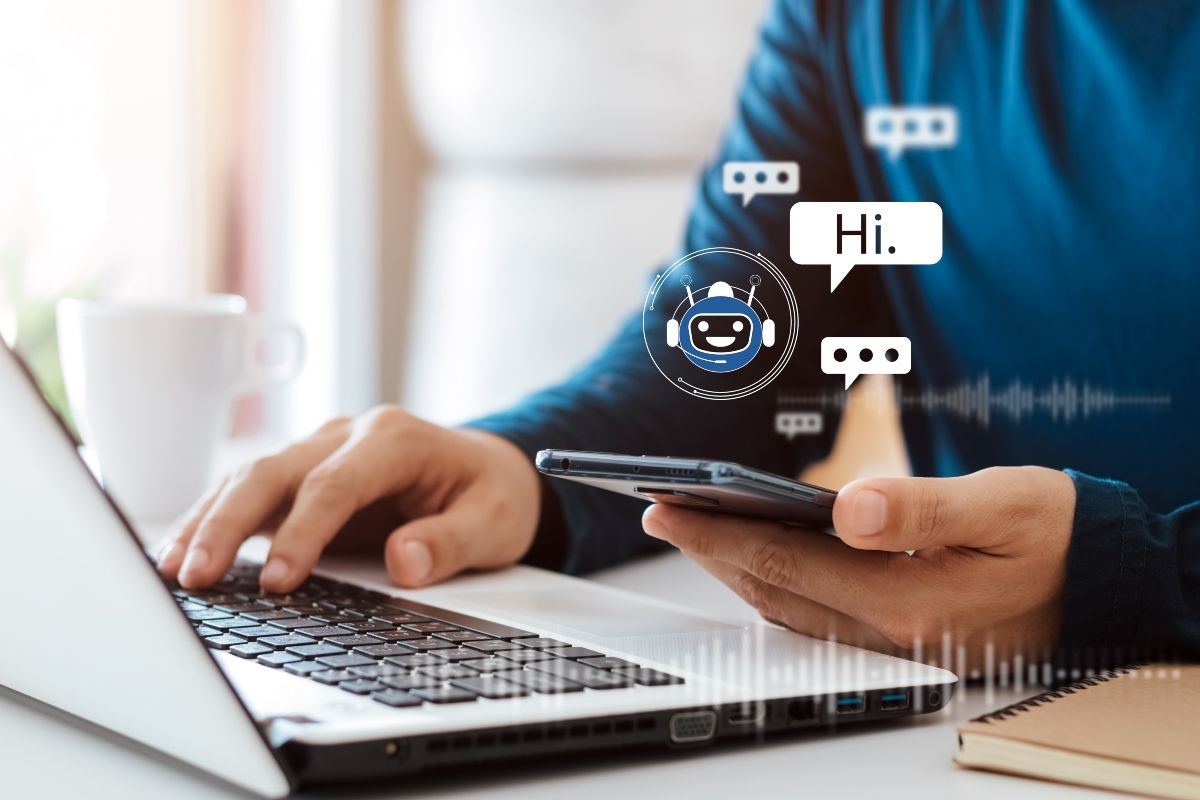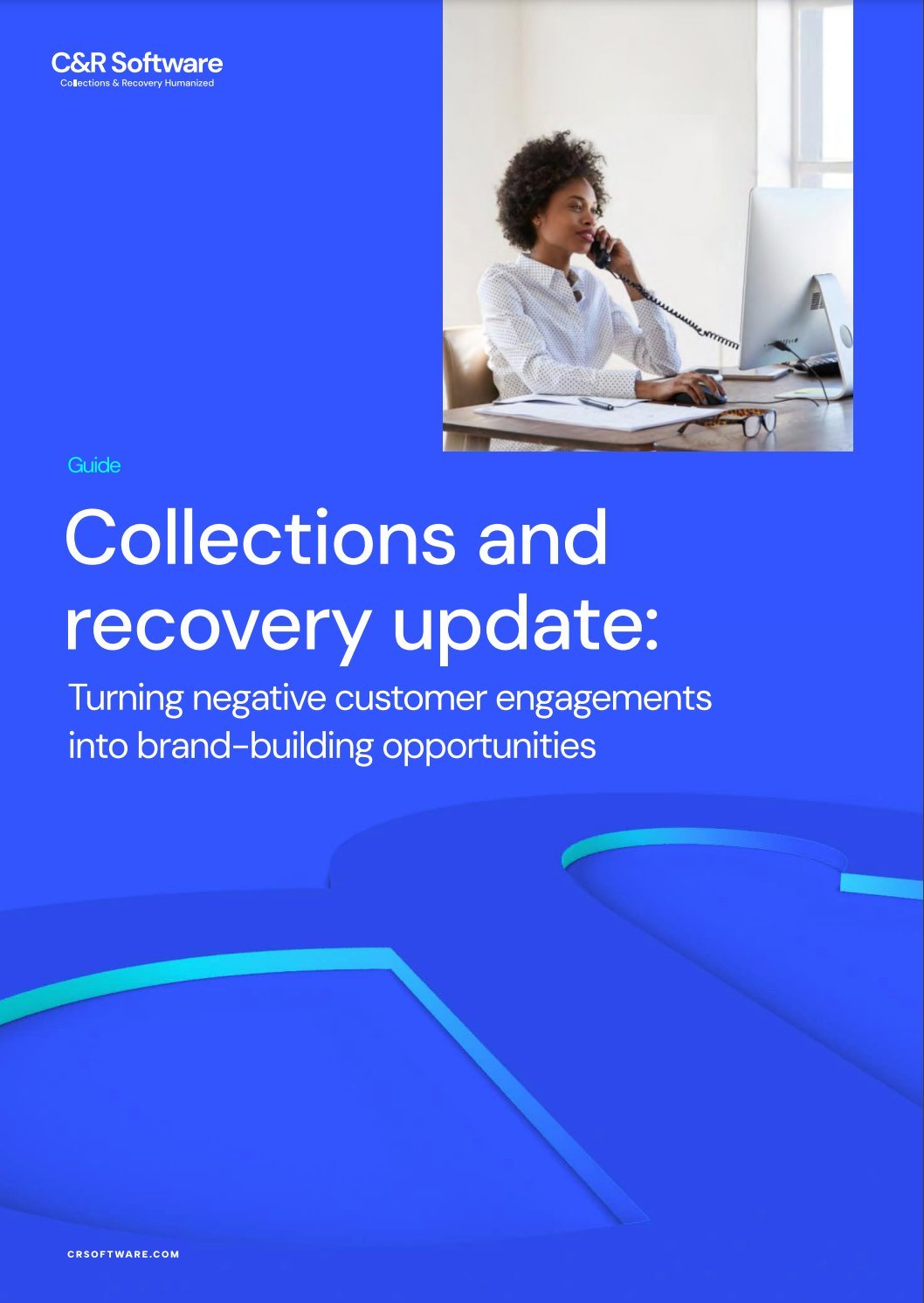By the end of 2022, total household debt had increased by $394 billion. Credit card debt alone had increased by $61 billion, with 4% of that debt being 90+ days delinquent.*
In response to the growing number of consumers in delinquent debt, businesses are implementing more customer-centric strategies across different stages of recovery. Not only does it help guide accounts back to financial health, but enables businesses to efficiently hit KPIs while building brand loyalty. Self-service is a vital component of customer centricity in debt recovery.
It provides customers with the ability to resolve their own debt, and gives your collections team more time to focus their attention on complex customer scenarios. Self-service is becoming the new normal in recovery, and continuing to be without it will prove to be a disadvantage for your customers and your bottom line.
What is self-service in debt recovery?
Self-service represents any system in the recovery process that helps customers cure delinquency themselves. Many focus on those in pre-delinquency or the early-stages of the debt lifecycle, empowering customers to curate their own recovery process. Examples of self-service systems include:
Chatbots – Chatbots are AI-driven tools that are able to interpret text and language to hold basic communications with customers. These customers might feel embarrassed by their predicament and choose to avoid speaking on the phone. Because of this, they are more likely to engage with a chatbot, which is able to present repayment offers based on their individual situation through AI-tools.
Omnichannel – Omnichannel communications is a vital component of self-service in recovery and includes texting, emails, phone calls, and letters. Without the means to contact customers via an appropriate medium, you cannot effectively prompt customers to engage with your process. Providing customers with the ability to choose their preferred channel of communication not only boosts response rates, but enables them to personalize their own recovery journey.
AI, machine learning and automation – AI and machine learning tools are the foundation of almost every self-service touch point. They collect, analyze and interpret customer data to provide accurate predictive analytics. From these analytics, unique workflows are deployed and dedicated treatment paths are assigned to customers based on their individual situation and preferences.
What are the benefits of self-service?
Efficiency
By giving your customers the capability to self-serve at different stages of the recovery process, time and resources can be saved and redirected. An example is enabling your collections team to focus their efforts on higher-risk accounts that demand direct contact to resolve. Self-service directly reduces their workload and brings efficiency to operations by encouraging low-risk and early stage accounts to self-cure. Additionally, workflows and AI tools can automate these processes to bring further efficiencies.
Personalization
A pivotal aspect of customer-centricity is the hyper-personalization of their collection and recovery journey. By accommodating the specific preferences of your individual customers, you can have a more robust line of communication and ensure a positive and cooperative relationship moving forward.
Performance
Without digital self-service capabilities, you risk delaying response time for customers who prefer to self-cure online. According to a study performed by McKinsey, a bank saw a 15% increase of cured accounts after implementing a self-service option. By providing a personalized and digital experience in addition to traditional recovery methods, you’ll see a dramatic increase in recovery performance.
Provide intuitive self-service at different levels with Debt Manager
A customer-centric and empathetic approach to recovery is proven to bring efficiency and performance to the recovery process. Self-service provides your customers with an experience that is focused on simplifying and humanizing what is typically a stressful experience, making repayment more manageable.
C&R Software’s industry leading debt management and collection system, Debt Manager, has an array of self-service options to provide an improved customer experience that is available at all times. Our configurable platform has a range of digital self-serve interactions that create a more private and productive experience for customers, all the while enabling agents to focus on other, more complex collection cases. Moreover, our chatbot Cara can offer new payment plan options and the opportunity to address other, related issues to improve the customer journey.
To learn how Debt Manager can enable your customers to self-serve and self-cure, contact a member of our team today.


-1.png?width=352&name=operationalize%20AI%20(16)-1.png)

-Nov-27-2025-01-57-26-4753-PM.png?width=352&name=operationalize%20AI%20(14)-Nov-27-2025-01-57-26-4753-PM.png)
-Nov-25-2025-07-50-59-5394-PM.png?width=352&name=operationalize%20AI%20(13)-Nov-25-2025-07-50-59-5394-PM.png)

